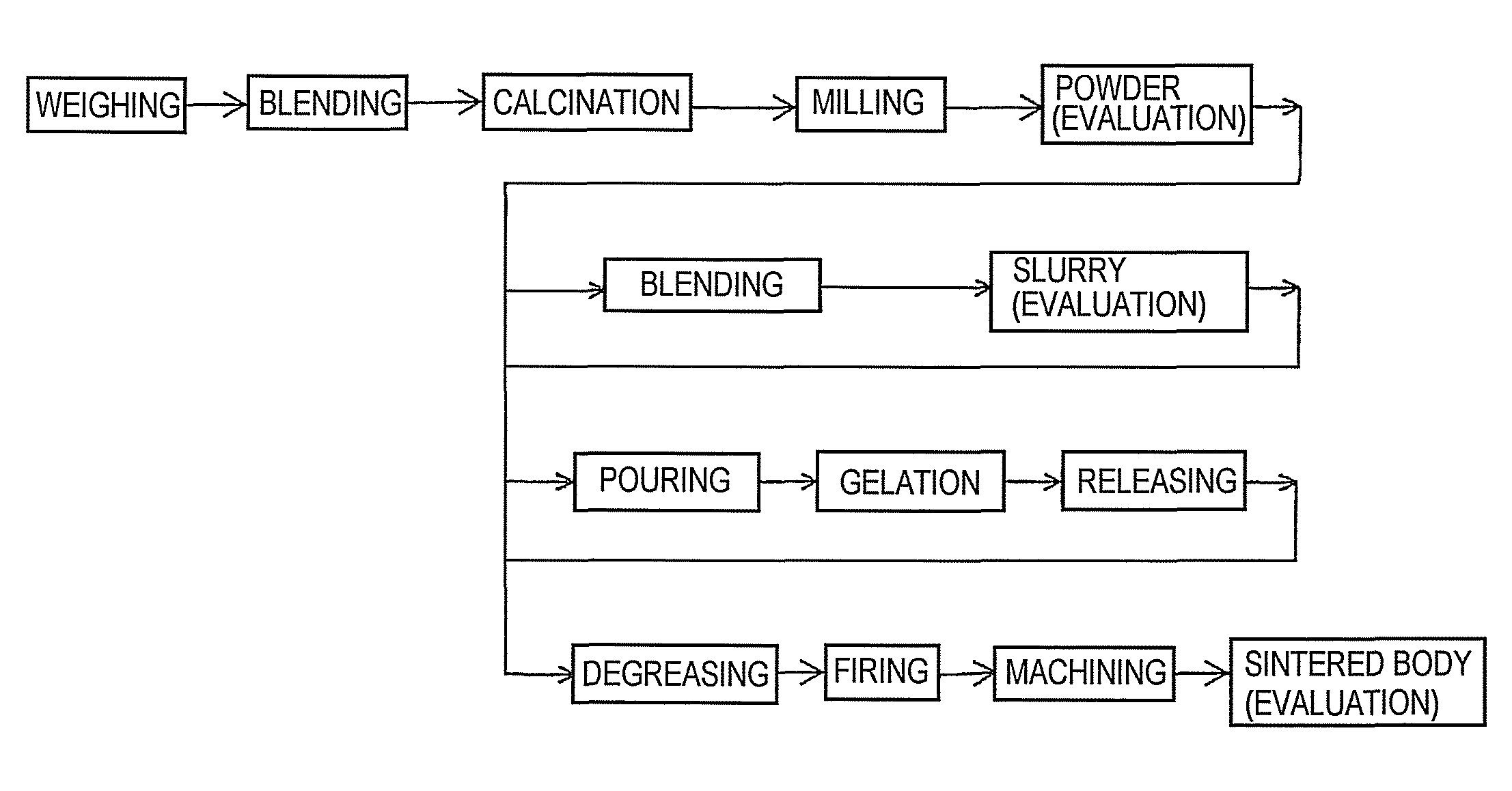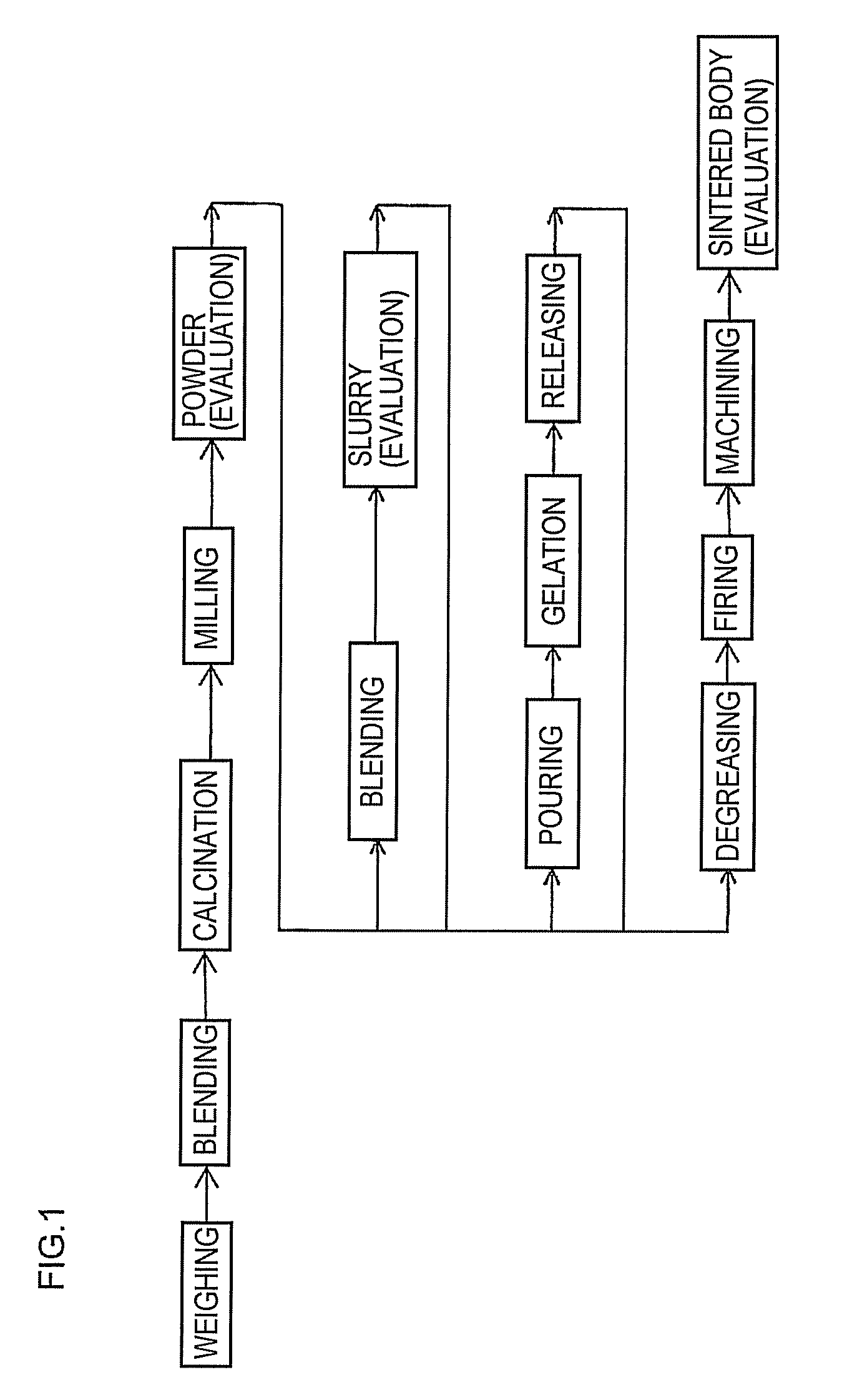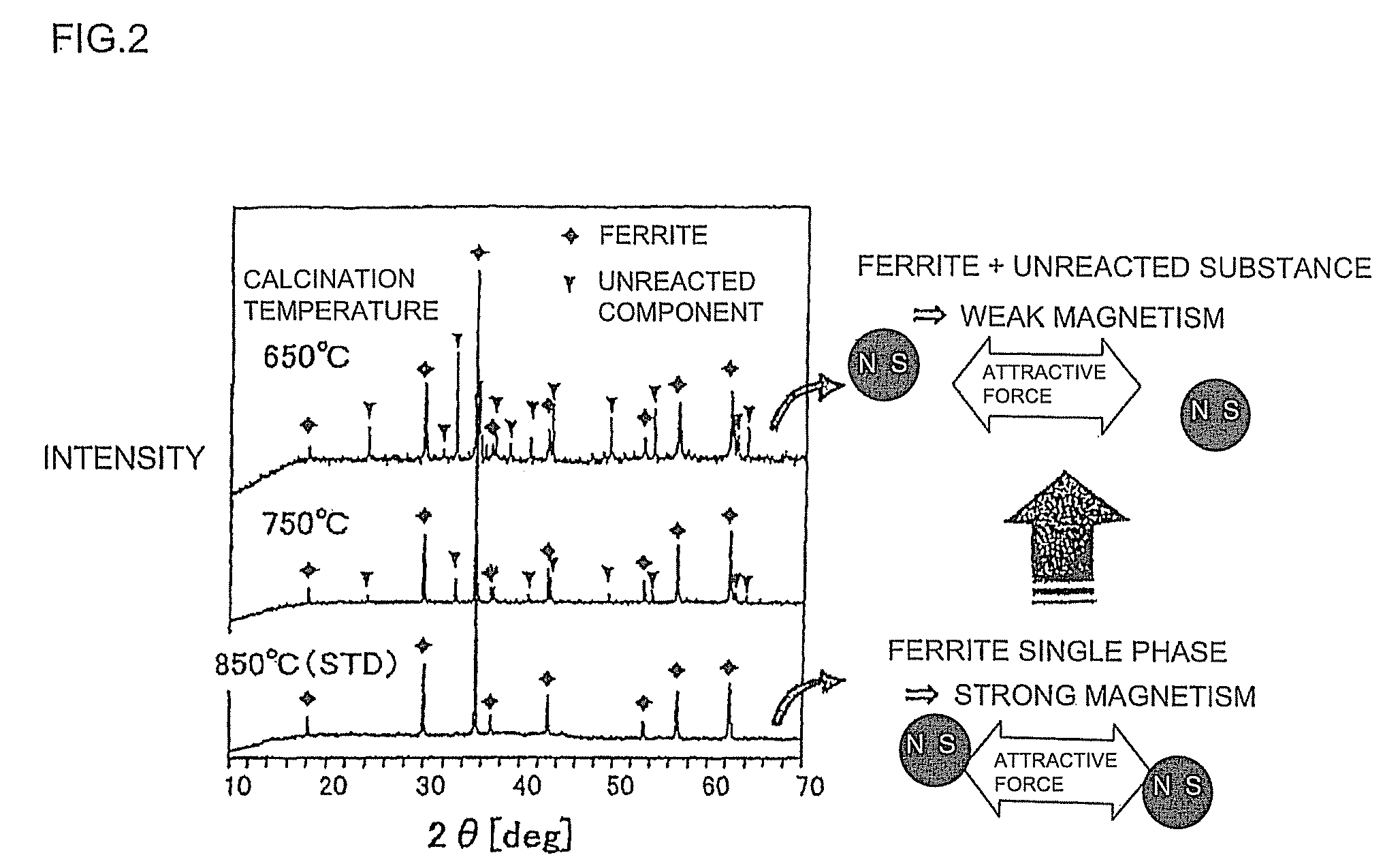Ferrite powder and its production method
a technology of ferrite powder and slurry, applied in the field of ferrite powder, can solve the problems of reducing slurry, deteriorating formability, and reducing production yield, and achieve the effects of favorable flowability of ferrite slurry, small thickness, and small siz
- Summary
- Abstract
- Description
- Claims
- Application Information
AI Technical Summary
Benefits of technology
Problems solved by technology
Method used
Image
Examples
example 1
Preparation of Ferrite Powder
[0074]Individual raw material powders were weighed: Fe2O3 (0.5 μm) to 47.6% by mole, ZnO (0.3 μm) to 27.0% by mole, NiO (1 μm) to 16.3% by mole, and CuO (2 μm) to 9.1% by mole. These powders were put in a poly container together with zirconia balls and ion-exchange water. Using the ball-mill method, wet blending of them was given for 5 hours (blending time of raw material powders on producing the ferrite powder), thus obtained the slurry. The slurry was then dried in a dryer at 100° C., followed by sieving to obtain an intermediate powder (blended raw material powder). The composition gave 830° C. of the ferrite single-phasing temperature.
[0075]Next, the intermediate powder was calcined at 700° C. (the calcination temperature on producing the ferrite powder) for 2 hours, thus obtained a calcined powder. At that time, the temperature increase and decrease rate was set to 200° C. / h.
[0076]Then, thus obtained calcined powder was put in a poly container toget...
examples 2 to 25
, Comparative Examples 1 to 13
[0087]There were varied the median diameter and the specific surface area, the degree of spinel formation, and the remanent magnetization of ferrite powder through the adjustment of calcination temperature on producing the ferrite powder, and the mixing time of raw material powders and the milling time of calcined powder on producing the ferrite powder. In addition, similar to Example 1, there were prepared and evaluated the Ni—Zn—Cu-based ferrite powder, the ferrite slurry, and the ferrite sintered body. The specific surface area of mixed powder after mixing was in a range from 3.5 to 6.0 m2 / g, and the specific surface area of milled powder after milling was in a range from 2.5 to 5.5 m2 / g.
[0088]Table 1 shows the result of similar articles to those in Example 1. The evaluation criteria for Examples 2 to 25 and Comparative Examples 1 to 13 were the same to those of Example 1. For Example 6, Example 8, and Comparative Example 4, the remanent magnetizatio...
PUM
| Property | Measurement | Unit |
|---|---|---|
| median diameter D50 | aaaaa | aaaaa |
| temperature | aaaaa | aaaaa |
| specific surface area | aaaaa | aaaaa |
Abstract
Description
Claims
Application Information
 Login to View More
Login to View More - R&D
- Intellectual Property
- Life Sciences
- Materials
- Tech Scout
- Unparalleled Data Quality
- Higher Quality Content
- 60% Fewer Hallucinations
Browse by: Latest US Patents, China's latest patents, Technical Efficacy Thesaurus, Application Domain, Technology Topic, Popular Technical Reports.
© 2025 PatSnap. All rights reserved.Legal|Privacy policy|Modern Slavery Act Transparency Statement|Sitemap|About US| Contact US: help@patsnap.com



